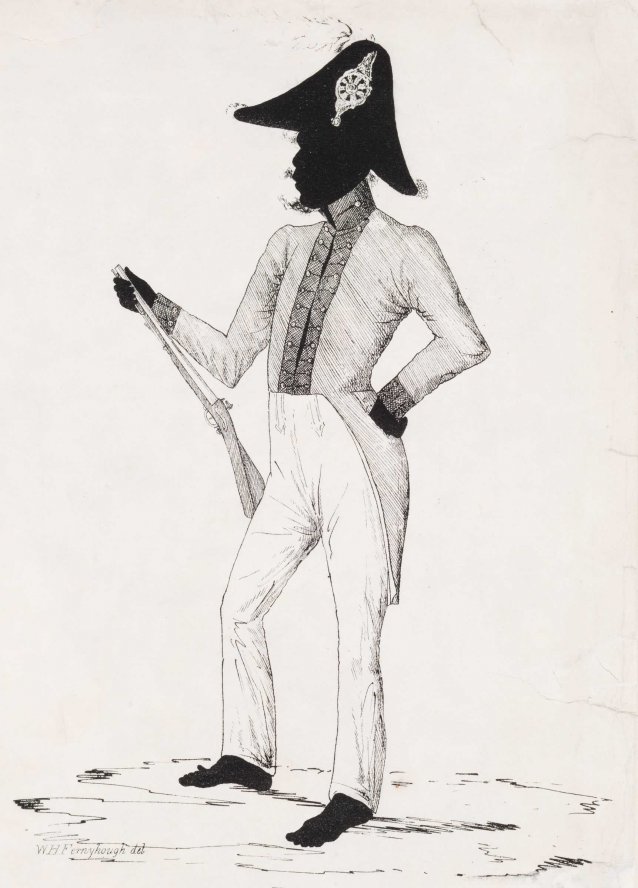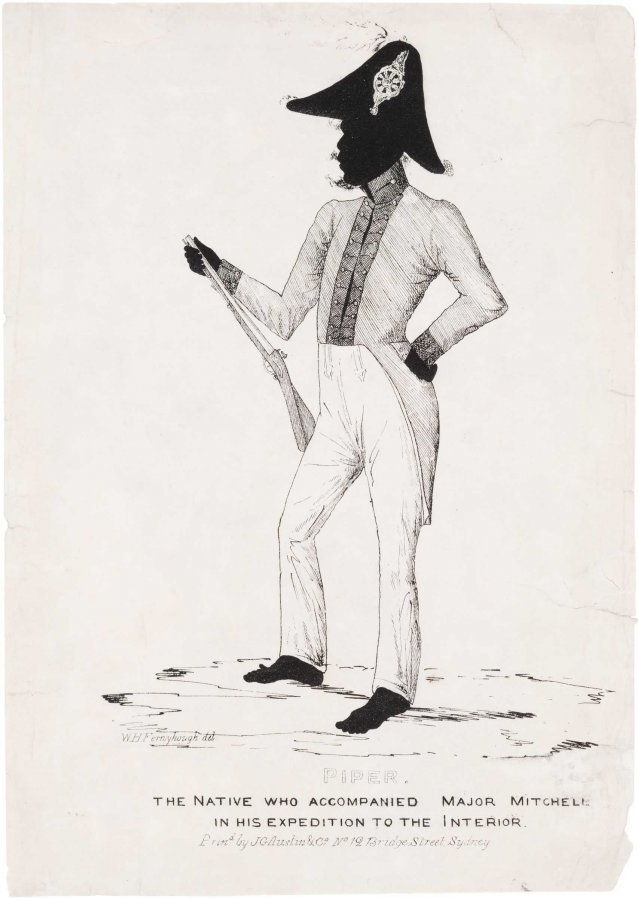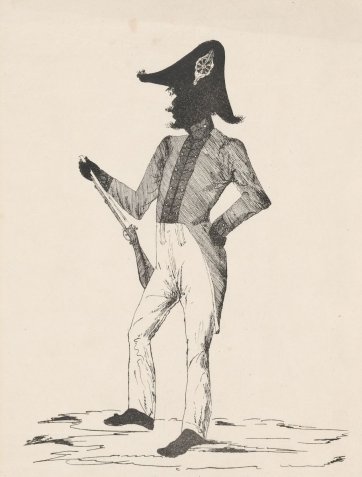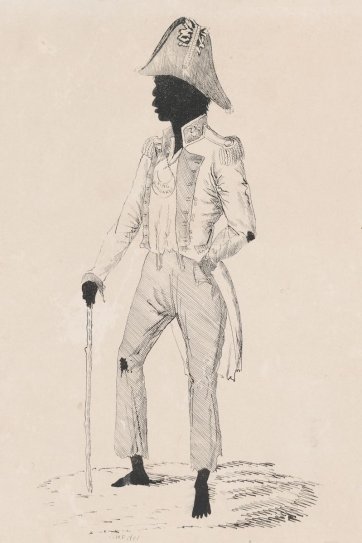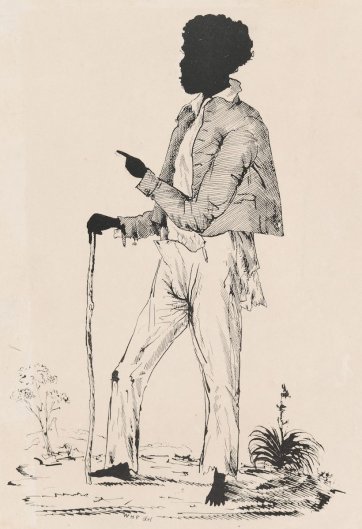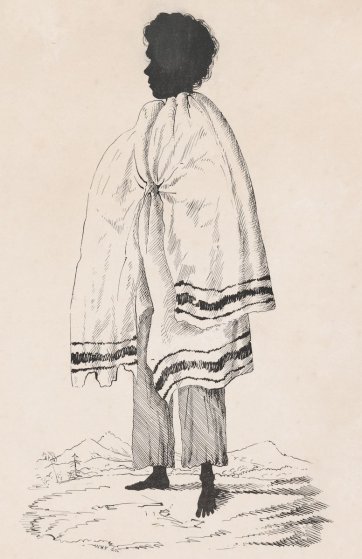Piper (life dates unknown) was a Wiradjuri man who accompanied Thomas Mitchell’s surveying expedition along the Murray and Darling Rivers in 1836. Along with five other guides, Piper engaged in hunting, locating water and route-finding, and acted as a go-between and interpreter. Mitchell later wrote that ‘in most of our difficulties … the intelligence and skill of our sable friends made the white-fellows appear rather stupid. They could read traces on the earth, climb trees or dive into the water … better than the ablest of us. In tracing lost cattle, speaking to the wild natives, hunting or diving, Piper was the most accomplished man in the camp’. On the expedition’s conclusion, Piper received various gifts, including a breastplate ‘on which he was styled … as Conqueror of the Interior’. In December 1845, having travelled to the Hunter Valley, Moreton Bay and Adelaide among other places, Piper and another two Wiradjuri men, Yuranigh and Dickey, set out on the journey by which Mitchell hoped to establish an overland route to Port Essington. In January 1846, however, acting on a report that Piper planned to desert, Mitchell had him escorted back to Bathurst under guard, thus creating a bitter end to an association Mitchell had long considered a friendship. Piper’s subsequent fate remains unknown.
This work is from a series titled Twelve Profile Portraits of the Aborigines of New South Wales, first issued in 1836. The historian Richard Neville has observed that the silhouettes were not intended as caricatures, but as faithful and ‘correct’ likenesses allowing the sitters to be considered in the light of current physiognomic theories.
Collection: National Portrait Gallery
Purchased 2016
The National Portrait Gallery respects the artistic and intellectual property rights of others. Works of art from the collection are reproduced as per the
Australian Copyright Act 1968 (Cth). The use of images of works from the collection may be restricted under the Act. Requests for a reproduction of a work of art can be made through a
Reproduction request. For further information please contact
NPG Copyright.
